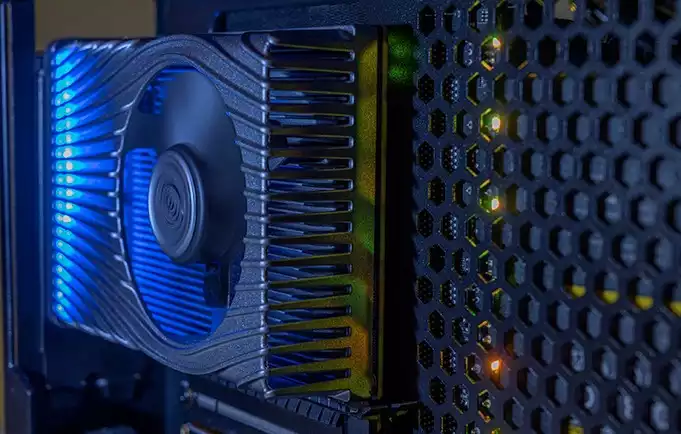Intel appears ready to take on Nvidia and AMD in the discrete GPU arena
At Intel's latest Architecture Day, the chipmaker detailed its ambitions for its next-generation "Xe" GPU architecture It was known that Intel has plans to produce dedicated graphics cards from Xe GPUs, and finally it was confirmed that they will appear in 2021 and support ray tracing
Intel will have four tiers of Xe graphics Xe-LP for the upcoming Tiger Lake chips, XE-HP for data centers, Xe-HPC for supercomputers, and Xe-HPG for gaming The latter is expected to be a scalable GPU with fast GDDR6 [However, Intel has not revealed many details about Xe-HPG's architecture or core specifications, saying only that it is aimed at gamers and will have the ability to perform ray tracing like the current generation GeForce RTX graphics cards It is not yet clear if it will have dedicated hardware to perform the tracing or if it will use a smart software system
However, ray tracing requires significant graphics performance, suggesting that the Xe-HPG GPU will be a discrete graphics card with adequate performance, which may challenge the Nvidia GeForce RTX 3080 and AMD Big Navi GPUs due out this fall It could be a challenge The emergence of another player in the graphics card arena could lead to more competition and more innovation from Nvidia and AMD
We have also known for some time that Xe graphics will form the integrated GPU of Intel's upcoming Tiger Lake processors, which are expected to be found in upcoming devices such as the Microsoft Surface Laptop 4 With the current generation of Ice Lake CPUs featuring the Gen11 Iris Plus GPU, Intel has achieved a noticeable improvement in graphics performance over Intel UHD graphics
However, Tiger Lake chips with Gen12 Xe GPUs are said to offer at least twice the performance of the Iris Plus; the Xe integrated GPU has 96 execution units, compared to 64 EU on the top-end G7 Iris Plus
With optimization and a new underlying architecture, the claimed performance gains seem rather likely Also, in a June tweet by Intel Chief Performance Strategist Ryan Shrout, a prototype of a Tiger Lake system with Xe graphics was able to run Battlefield V at a smooth frame rate that appeared to be at 1080p resolution running at what appeared to be 1080p resolution
Intel's Architecture Day presentation also highlighted the ability of Xe GPUs to sharpen game graphics and tune the GPU for specific games without requiring driver updates In short, the Tiger Lake chip Xe has the potential to allow thin and light laptops to run the latest games at moderate settings without the need for a dedicated graphics card
That doesn't mean gaming laptops are game over; the possibility of a Dell XPS 13 running PlayerUnknown's Battlegrounds or Doom Eternal on the go is quite appealing
Laptops with Tiger Lake chips and Xe graphics are expected to start arriving in September So it won't take long to see if the Xe GPUs are worth the hype










Comments